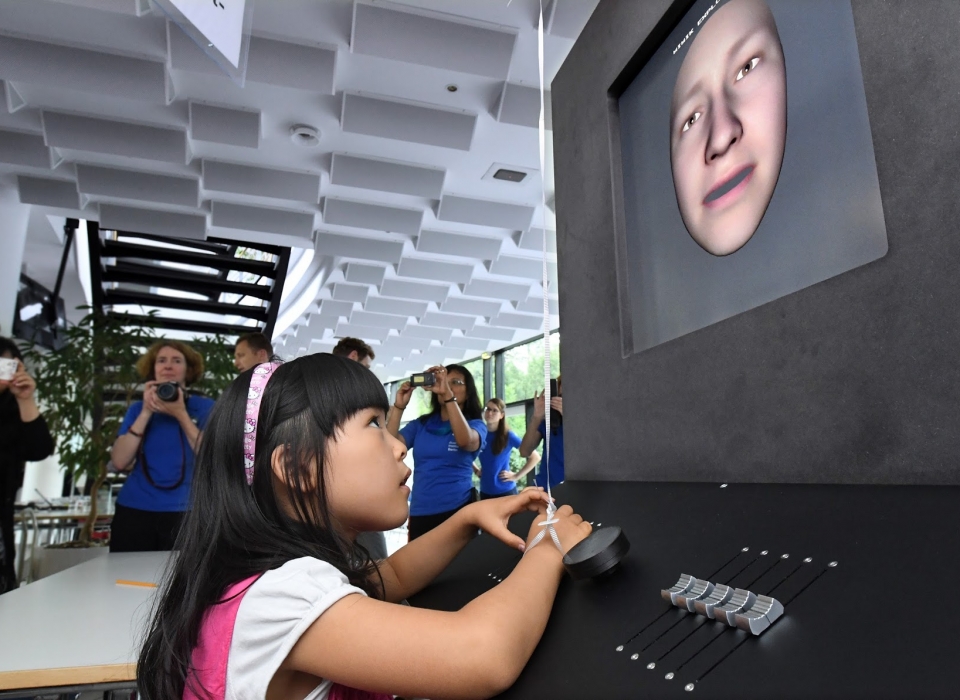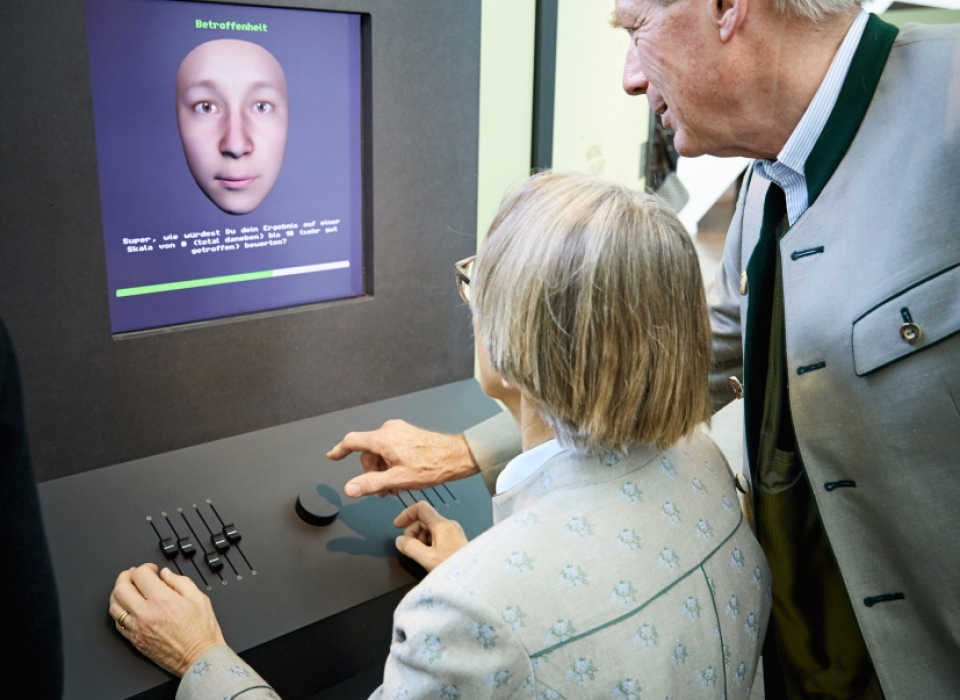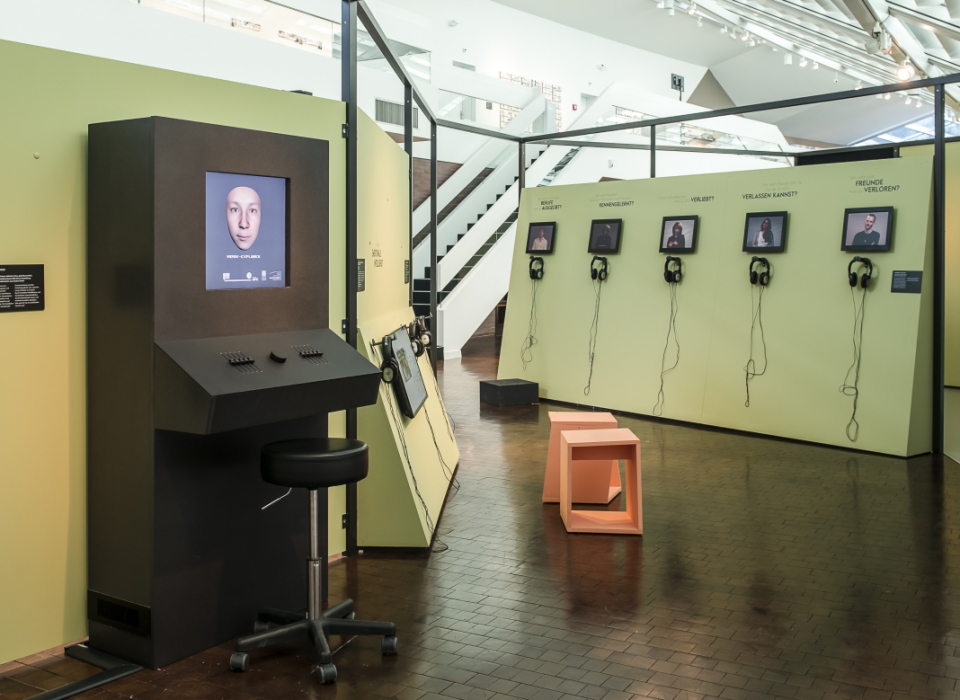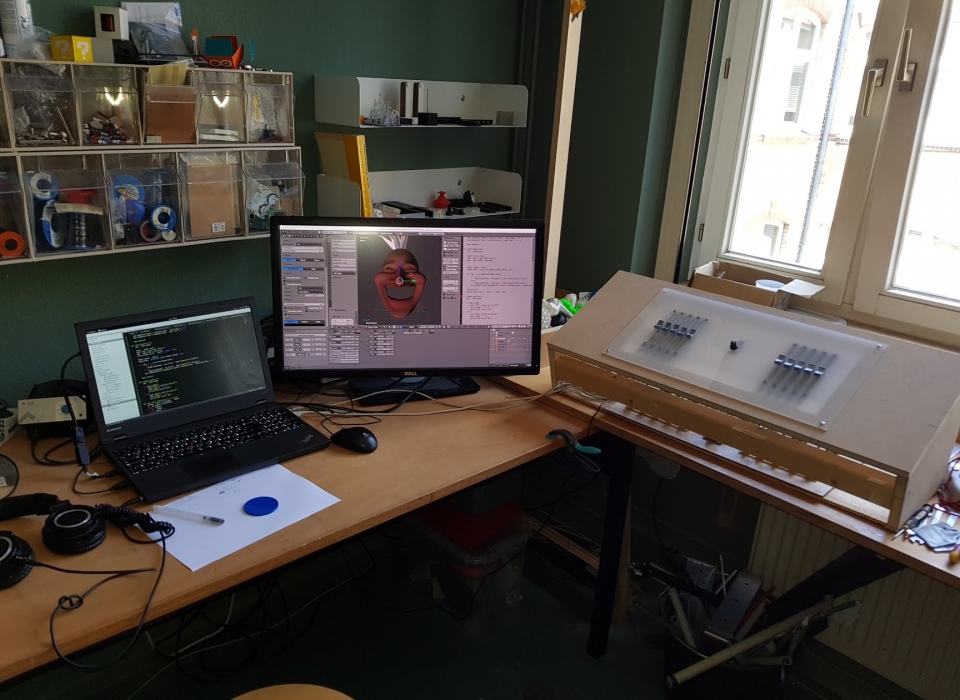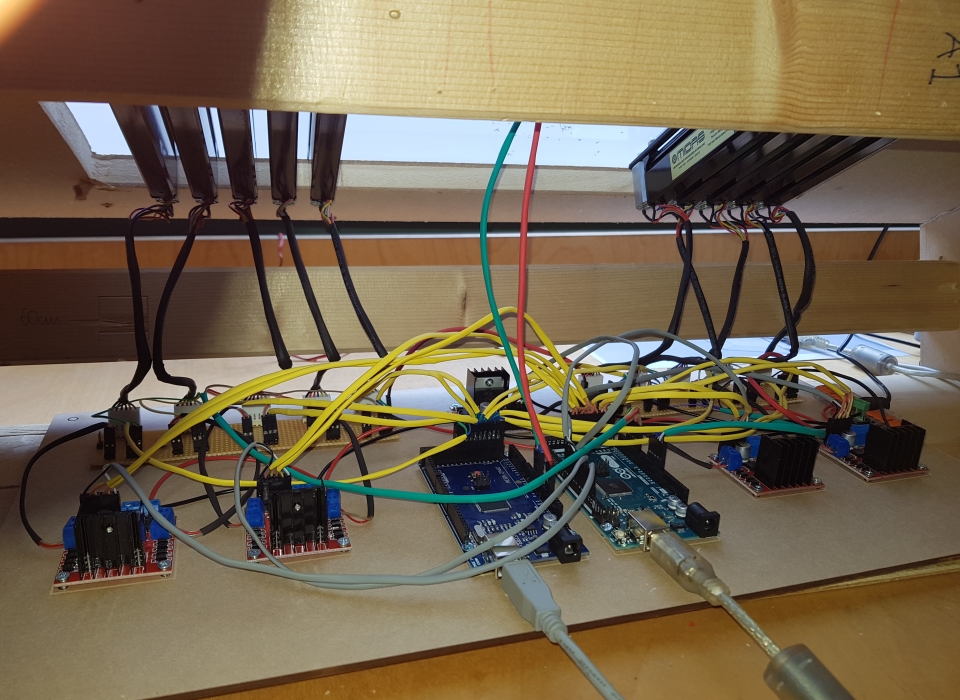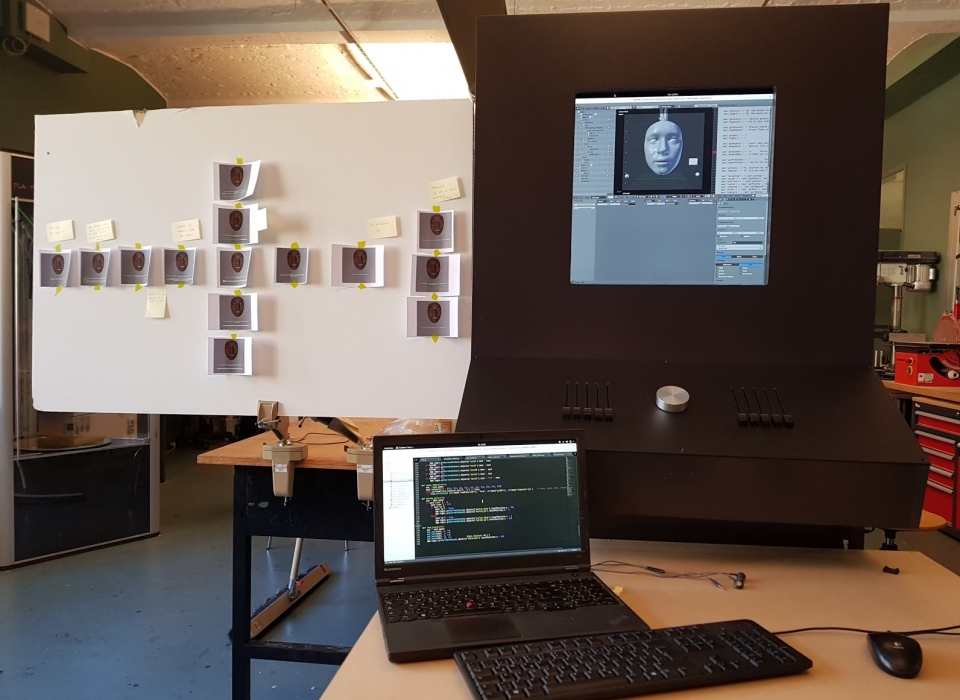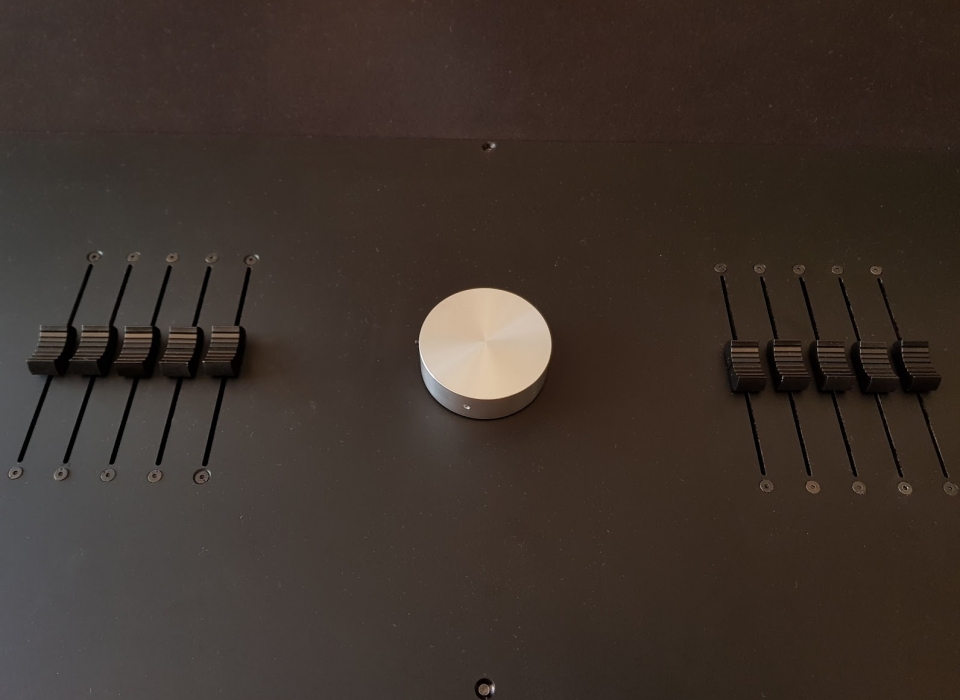I came up with the idea for the MIMIK Explorer in 2017 to provide an interactive platform for people to experience 3D morphable facial models to their full potential. The emotional and identity shape space of the human face is extremely large and I felt it needed a haptic interface which gave people intuative access to all these variations.
The project then evolved to an interdisciplinary collaboration, combining psychological research, interaction design, and quantitive facial modelling. Leading to the development of a behavioural research tool, which can be displayed at exhibitions with a wide range of participants.
Installation History

Kühlhaus Berlin 10/2016
At Potentials002 the first version called “The Face Explorer” was presented on a 3-meter tall projection surface, with two slider control boxes on either side. One to vary the identity of the 3D Morphable facial model and another to change the facial expression.
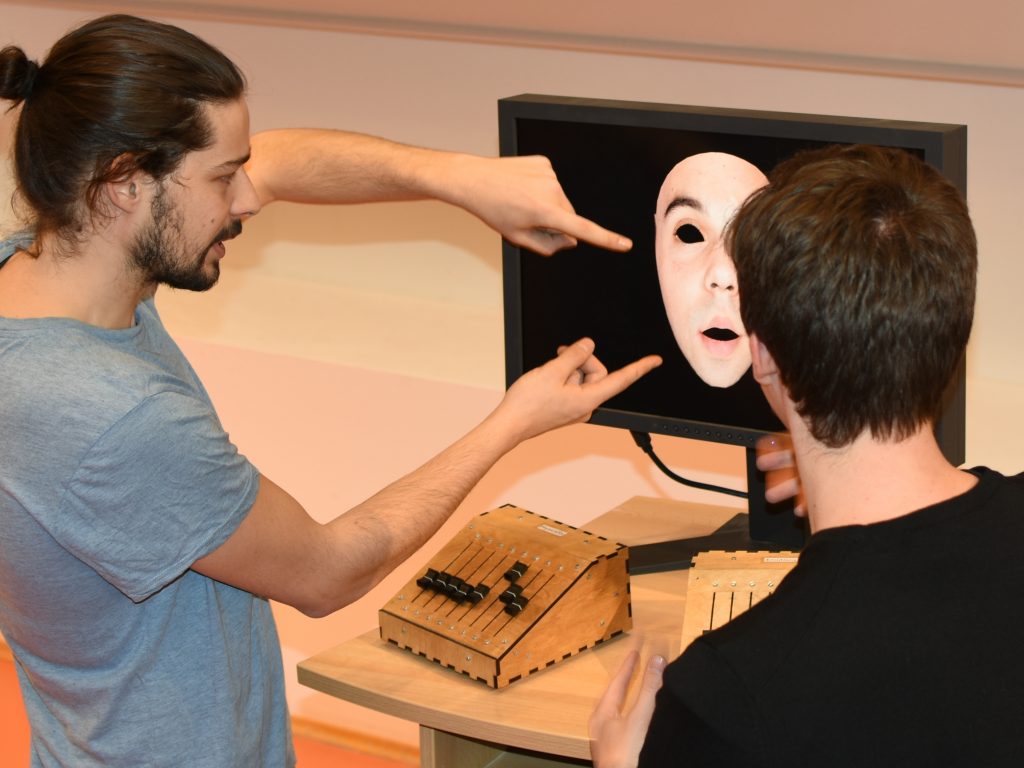
Martin-Gropius-Bau Berlin 11/2016
A smaller version was placed as a support to the Camera Facialis 3D portrait studio at +ultra at Martin Gropius Bau Berlin.
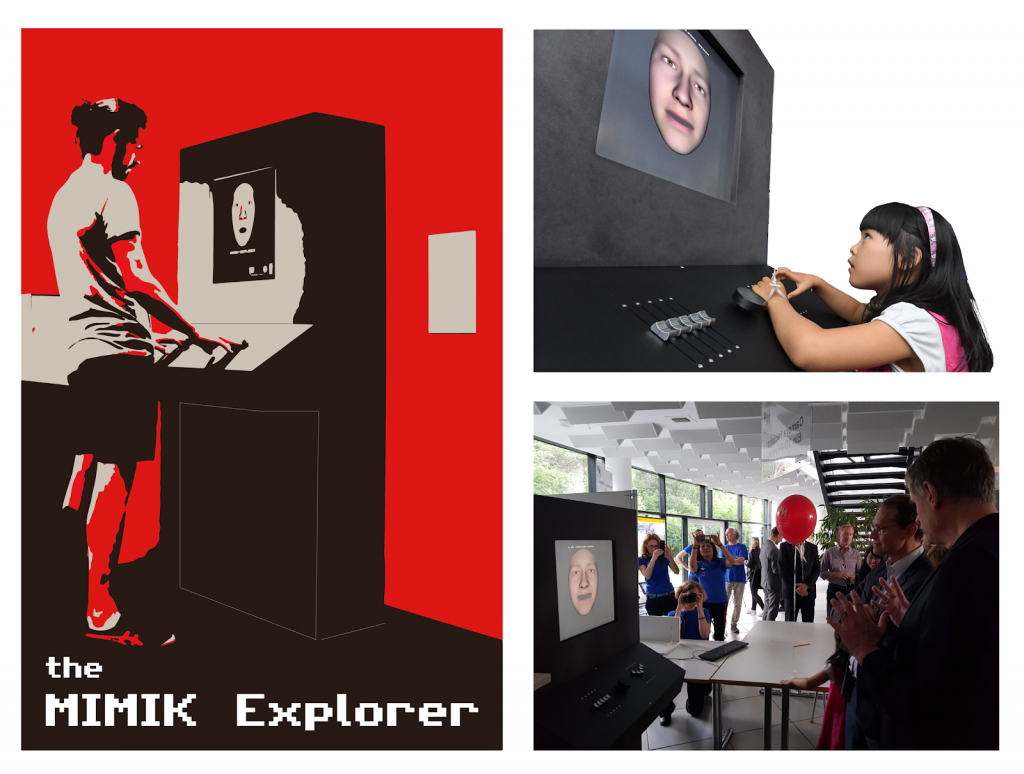
Hygiene Museum Dresden 07/17 – 02/18
After extensive upgrades the Mimik Explorer was showcased at the exhibition, Das Gesicht at the Deutsche Hygiene Museum Dresden for a period of 6 months. The interaction design capabilities, user interface, and 3D Models were all redesigned and improved in collaboration with Martin Grewe and Julia Blumenthal as part of the HU Cluster of Excellence Image. Knowledge. Gestaltung.

Vögele Kultur Zentrum 05/19 – 09/19
The Mimik-Explorer was on display for a period of 4 months at the exhibition Faszination Gesicht at the Vögele Kultur Zentrum, SZ. Upgrades to the 3D morphable facial shape model allowed much more intuitive control of the independent face regions.
Technical Details
The technical development of the Mimik Explorer took place over several iteration stages and is currently still ongoing. In its current form, it has 10 motorized faders to control the facial expression of the 3D Model and a rotary encoder to navigate the user interface. The 3D morphable facial model was developed at the Zuse Institue Berlin applying quantitative methods of digital facial morphology to the 3D Mimik-Archiv, a dataset of 3D facial expressions gathered at the Camera Facialis Portrait Studio. For further details on this model please refer to our publication, FG 2018. The 3D interface was implemented in using the Blender Game Engine.
Not only does the Mimik Explorer serve as an interactive experiment of the perception of facial morphology, but also as a tool to explore new techniques for behavioural research. Therefore a significant portion of development time was spent refining the interaction design, such that users with a range of technical abilities could use it to provide us with psychological research data.

The transdisciplinary collaboration during development of the MIMIK-Explorer in its current version. From first hand-drawn sketches, a digital model was drafted to the final design implementation.

